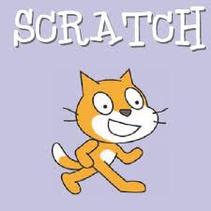WHAT IS SCRATCH?

Scratch is more than a piece of software. It is part of a broader educational mission. Scratch was designed to help young people prepare for life in today's fast-changing society.
As young people create Scratch projects, they are not just learning how to write computer programs. They are learning to think creatively, reason systematically, use technologies fluently, design iteratively, learn continuously and work collaboratively—essential skills for success and happiness in the 21st century. Scratch is a programming language intended to make programming easier to learn for novice programmers. It can be used to create computer games, interactive stories, graphic artwork and computer animation, and all sorts of other multimedia projects. Scratch can also be used to play digital music and sound effects.
If you aspire to one day become a professional programmer, Scratch provides everything you need to build a foundation. Scratch also packs all of the programming power and punch needed to satisfy the programming needs of most computer enthusiasts and hobbyists. Best of all, it's actually fun to use! |
BEFORE YOU START:You need to do these things:
These are resources for you to refer to during the unit:
|
